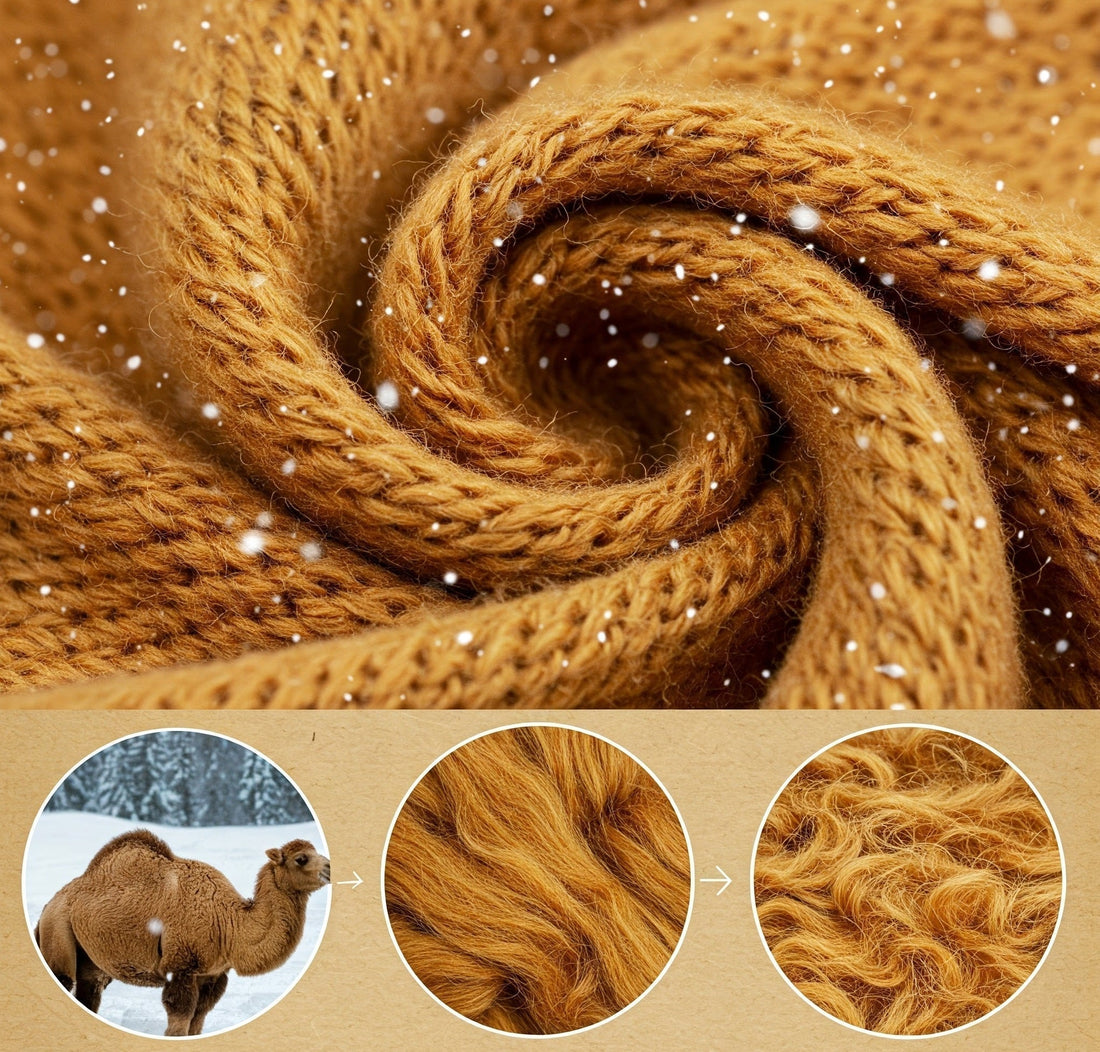
Camel wool: The secret to a natural and luxurious sleep in your duvet
Share
In a world of bedding dominated by synthetics and classic fillings, one natural material is increasingly standing out, offering unparalleled comfort and functionality: camel wool . While it may not be the first thing that comes to mind when you think of a duvet, camel wool has been prized for its extraordinary properties for centuries, and today it is experiencing a real renaissance in luxury bedding. But what makes it so special, and why is it better than popular alternatives like polyester? Let's dive deeper.
What is camel wool and where does it come from?
Camel wool is primarily obtained from the two-humped camel (Bactrian camel, camelus bactrianus) , which lives in the extreme climatic conditions of Central Asia - from the scorching heat of the desert to the freezing cold of winter. It is precisely this camel's ability to survive in such a harsh environment that gives its wool unique thermoregulatory properties.
Unlike sheep, camels are not sheared. The wool is collected during the moulting season in the spring, when it naturally separates from the animal's body. This ensures a humane and sustainable method of collection.

From collection to quilt: Preparation and processing
The process of preparing camel wool for quilt filling is gentle and environmentally friendly, with the aim of preserving its natural properties:
-
Collection: Wool is hand-collected from camels during moulting. The highest quality and softest wool is that collected from the neck and forearms of young camels.
-
Rough cleaning and sorting: The collected wool goes through the process of removing major impurities (such as grass, sand). Wool is sorted by quality and fineness.
-
Gentle washing: Wool is washed in mild, eco-friendly detergents, often without the use of harsh chemicals that could damage the fiber structure or remove the natural lanolin (which is present in camel wool, but to a much lesser extent than sheep wool). The goal is to remove dirt but retain the wool's natural properties. Unlike sheep wool, camel wool requires less aggressive treatment.
-
Carding/Combing: The washed wool is then carded or combed to untangle, clean, and straighten the fibers. This creates a fluffy, uniform mass ready for quilt filling.
The end result is exceptionally pure, light and soft wool ready to become the filling of your quilt.

The incomparable benefits of camel wool (especially in quilts)
Camel wool offers a number of advantages that make it a superior choice for bedding, surpassing synthetic materials such as polyester in many aspects:
-
Excellent Thermoregulation (a key advantage for duvets):
-
This is the most important characteristic of camel wool. Its fibers are hollow and have a unique structure that allows them to regulate temperature in an extraordinary way. This means that a camel wool duvet will keep you warm in winter , but at the same time comfortable and cool in summer . It prevents overheating and sweating, providing an ideal microclimate for sleeping all year round. Polyester is warm, but does not "breathe" and can cause sweating.
-
-
Breathability:
-
Camel wool fibers enable excellent air circulation, which helps to remove excess heat and moisture from the bed. This results in a dry and comfortable sleeping environment.
-
-
Lightness:
-
Despite their ability to retain heat, camel wool duvets are surprisingly light and airy, providing a feeling of gentle envelopment without weight.
-
-
Hypoallergenic and Antiallergic properties:
-
Camel wool is naturally resistant to dust mites, mold, and fungus due to its unique fiber structure and minimal lanolin content (compared to sheep's wool). This makes it an ideal choice for people prone to allergies and asthma. Polyester may be suitable for allergy sufferers, but it does not offer natural dust mite resistance without additional chemical treatment.
-
-
Humidity Management:
-
Camel wool fibers can absorb moisture (such as sweat) up to 30% of their own weight while remaining dry to the touch. This ensures a dry and comfortable sleeping environment, reducing the feeling of dampness and discomfort. Polyester absorbs minimal moisture and the feeling of dampness remains.
-
-
Durability and Longevity:
-
Camel wool fibers are extremely strong and wear-resistant, ensuring that the quilt will last for years with proper care.
-
-
Softness and Comfort:
-
Although robust, camel wool is surprisingly soft and provides a luxurious feeling of comfort, adapting to the shape of the body.
-
-
Environmental friendliness and sustainability:
-
Camel wool is a natural, renewable resource, collected in a humane way, and the processing process is minimal and environmentally friendly.
-

Camel wool in duvets: The key to optimal sleep
All of these properties make camel wool the ideal filling for duvets. Whether you struggle with overheating in the summer or seek warmth in the winter, a camel wool duvet will adapt to your needs. They are an investment in your health and sleep quality, providing you with natural, hypoallergenic and perfectly balanced sleep every night.
Caring for camel wool duvets
Camel wool duvets require gentle care to maintain their properties:
-
Dry cleaning or professional cleaning is recommended.
-
Regular shaking and airing in fresh air will help the wool stay fluffy and fresh.
By investing in a camel wool duvet , you are choosing natural luxury and health, ensuring optimal conditions for the regenerating sleep you deserve. Try it and feel the difference!
